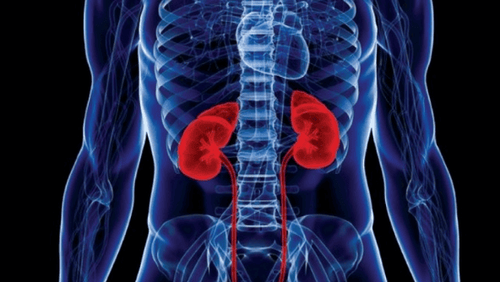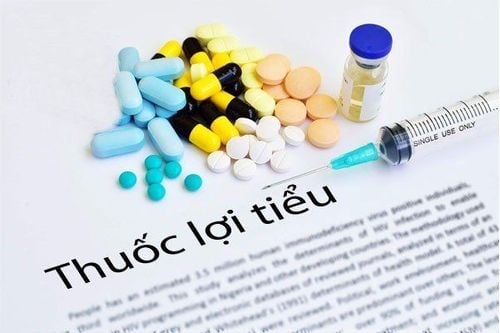This is an automatically translated article.
Kydhaemo is used as a renal replacement therapy for dialysis and patients with poisoning require continuous dialysis. The following article would like to provide readers with useful information about this Kydhaemo drug line.
1. What is Kydhaemo?
Kydhaemo drug belongs to the group of peritoneal dialysis solutions, prepared in the form of hemodialysis solutions (1.4%; 4.2%; 7.5% and 8.4%) packed in cartons of 1 can 10 liters .
Kydheamo medicine has the main ingredients Sodium chloride 30.5g and Sodium hydrocarbonate 66g, in addition, there are other excipients and purified water just enough 1000 ml.
2. What are the effects of Kydhaemo?
Kydheamo 2B drug is only used when mixed with Kydhemo 3A solution in the following cases:
Treatment of renal failure as a renal replacement therapy for dialysis and continuous hemodialysis. Treatment of patients with poisoning requires continuous dialysis therapy.
3. Dosage, How to take Kydhaemo
Kydhaemo 2B should not be used alone for hemodialysis. Kydheamo 2B should only be used when diluted immediately before use in the following proportions:
Kydheamo 3A solution (Acid): 1 volume Kydheamo 2B solution (Bicarbonate): 1.83 volumes Purified or distilled water: 34 volume Use extracorporeal acetate dialysis. Dialysis time depends on the condition of the patient. The rate of dialysis depends on the individual patient and prescribed by the treating physician. Note: Do not use Kydhaemo injection or intravenous infusion.
4. Contraindications to taking Kydhaemo
Kydhaemo should not be used in the following cases:
The patient has a serious blood clotting disorder. Patients with unstable blood circulation or blood pressure, need to apply other methods of extracorporeal dialysis.
5. Precautions when using Kydhaemo
Use Kydhaemo with caution in patients with unstable cardiovascular disease or bleeding. Use Kydhaemo only when the solution is clear. Do not use Kydhaemo if the solution contains solid particles. Particular attention should be paid to the potential for hypokalemia when Kydhaemo is used. If administration of sodium bicarbonate is contraindicated but renal function is not compromised, alkalinization with THAM solution is recommended. Avoid long-term use with doses of Kydhaemo higher than the recommended dose in patients with colectomy. Kydhaemo should not be used in patients with poor kidney function or patients on dialysis because it may cause an increase in the amount of aluminum or magnesium in the blood.
6. Interaction of Kydhaemo with other drugs
The following are some of the reported Kydheamo drug interactions:Sodium bicarbonate alkalinizes the urine, which may decrease the elimination of Amphetamine, Quinidine, Pseudoephedrine, and other sympathomimetics and increase toxicity. for the above drugs. Concomitant administration of sodium bicarbonate with lithium may increase the elimination of lithium. Do not take or avoid taking sodium bicarbonate with alcohol. When co-administering sucralfate with sodium bicarbonate, it should be noted that sucralfate is most effective in acidic environments and reduces drug efficacy if used with antacids. The absorption of some drugs may be slowed or decreased when combined with oral antacids such as: Rifampicin, Digoxin, Tetracyclines, Ciprofloxacin, Clopromazine, Diflunisal, Quinidin, Penicilamin, Warfarin and anticholinergic drugs.
7. What side effects does Kydhaemo cause?
Excessive use of sodium bicarbonate can cause metabolic alkalosis or edema. Special care should be taken when using Kydhaemo because of the potential for hypokalemia and hypernatremia. When taking oral Kydhaemo, adverse effects are mainly in the gastrointestinal tract such as causing diarrhea but are quite rare. Sodium bicarbonate should only be given intravenously because it can cause tissue necrosis if injected outside the vein. All treatments with pH buffers carry the risk of overdose. If the patient has alkalosis, there is a risk of increased serum osmolality and hypokalemia. In the case of patients with alkalosis, the increased activity of the breakdown of oses increases the risk of hypoglycemia, especially in patients who no longer store glycogen in the liver. Patients should have their acid-base calculated after 100-300 ml of sodium bicarbonate solution has been used to calculate the level of sodium bicarbonate to continue and also to avoid overdosing. In case patients with acidosis in diabetes are being treated with insulin, the patient should be closely monitored to avoid the risk of overdose of sodium bicarbonate. Sodium bicarbonate is a direct and potent antacid. Patients should avoid prolonged use of high doses of sodium bicarbonate. Above is information about the uses, dosage and precautions when using Kydheamo medicine. To ensure safety for your health and maximize the effectiveness of your treatment, you need to take Kydheamo exactly as directed by your doctor.
Please dial HOTLINE for more information or register for an appointment HERE. Download MyVinmec app to make appointments faster and to manage your bookings easily.













